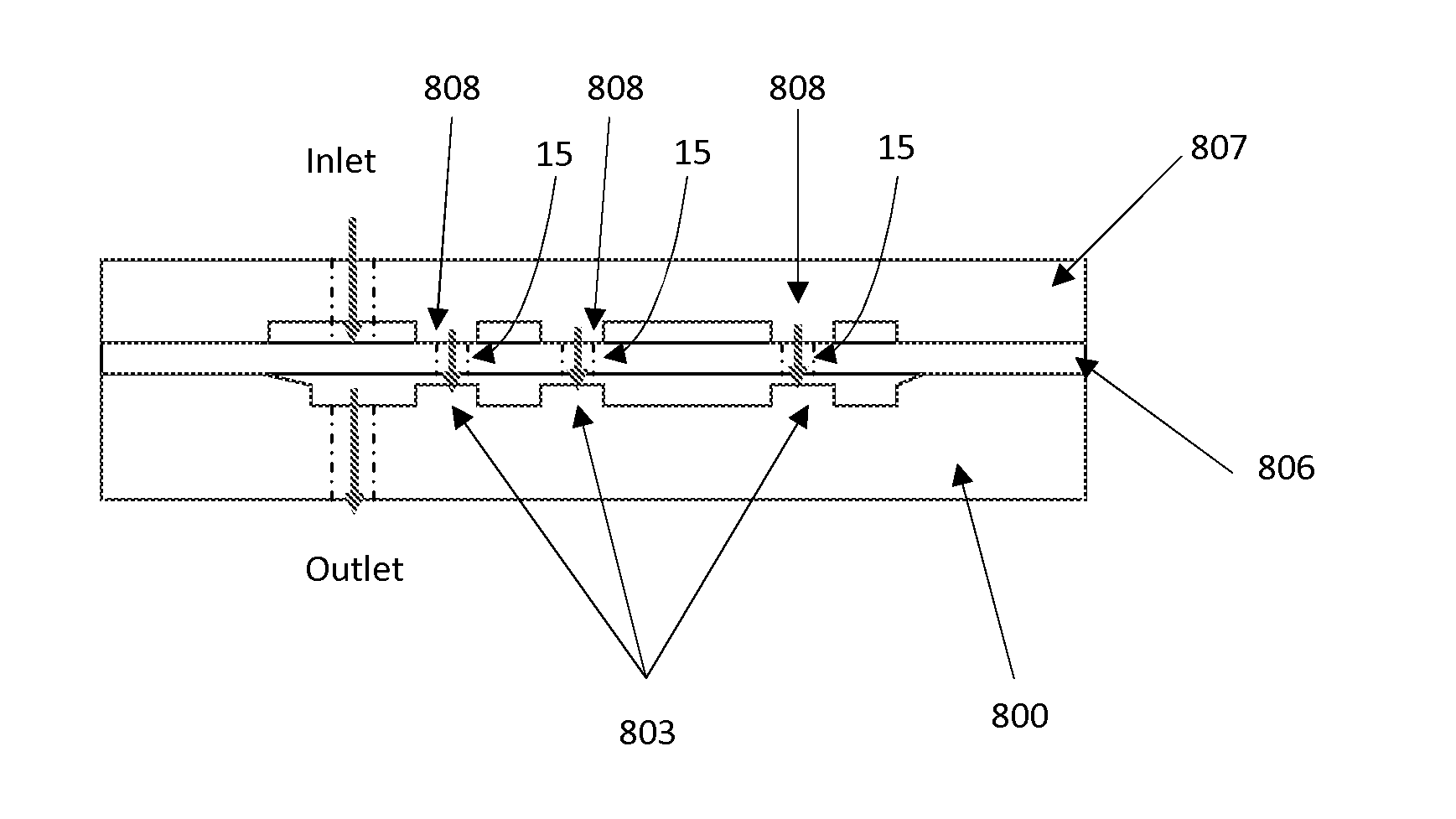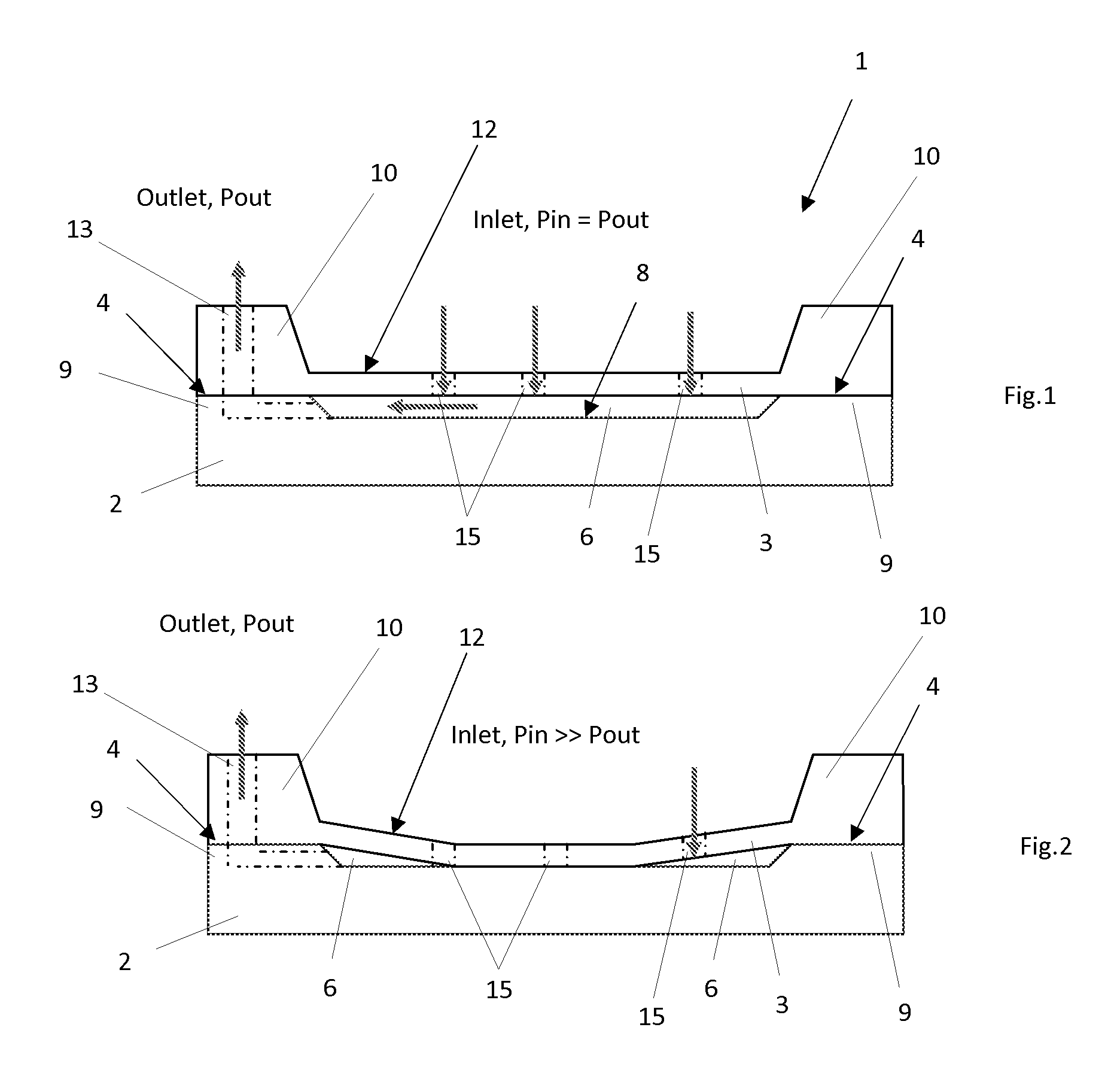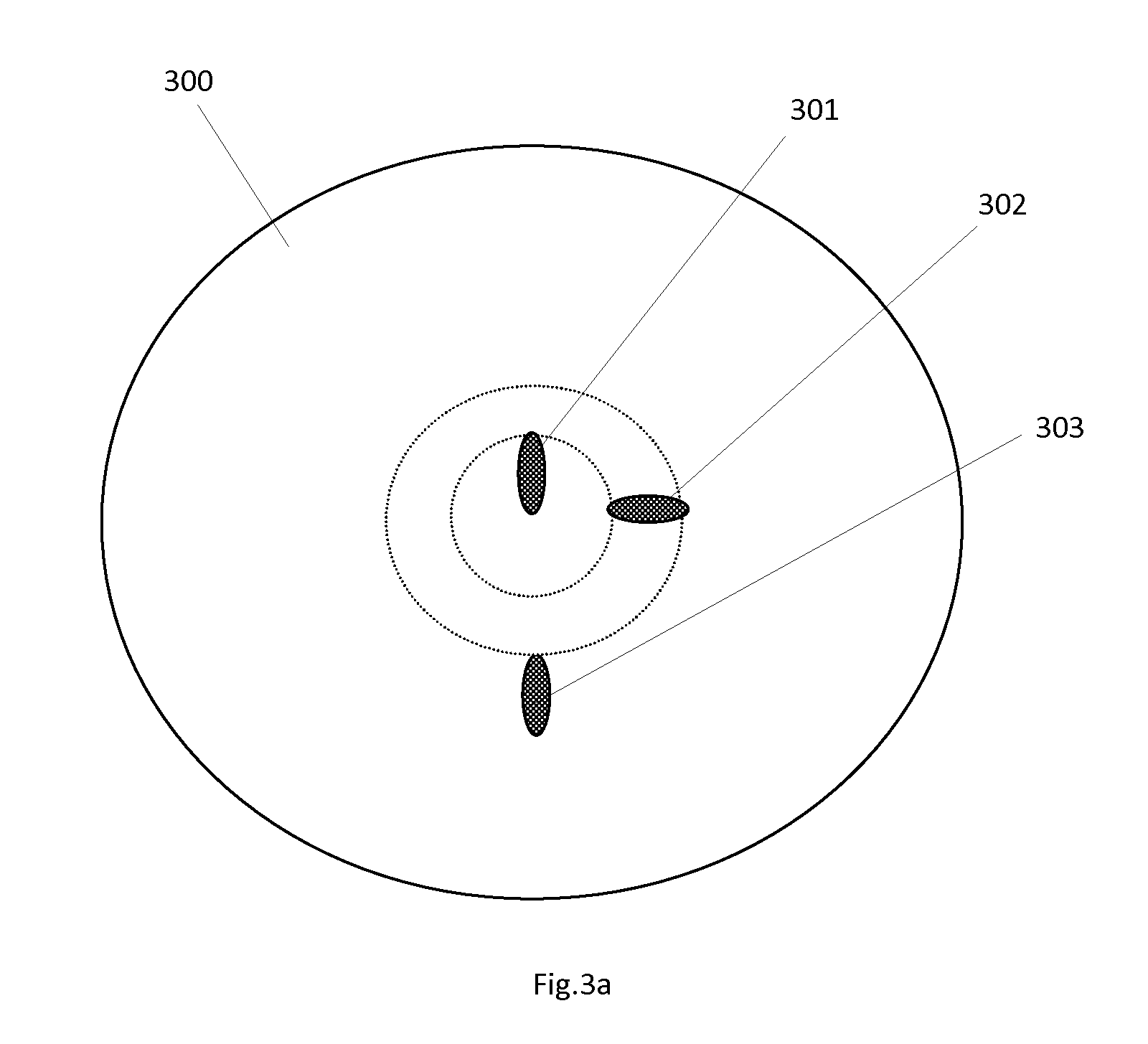Passive fluid flow regulator
a fluid flow regulator and passive technology, applied in the direction of flow monitors, wound drains, medical devices, etc., can solve the problems of complicated and expensive fabrication of such devices, affecting the flow of fluid through, so as to achieve easy and cheaper manufacturing and more flexibility.
- Summary
- Abstract
- Description
- Claims
- Application Information
AI Technical Summary
Benefits of technology
Problems solved by technology
Method used
Image
Examples
Embodiment Construction
[0047]FIG. 1 and FIG. 2 show simplified cross-sectional views of a fluid flow regulator according to a first embodiment of the present invention the general behaviour of which, with respect to the pressure applied to it, is similar to that of the previously mentioned prior art device.
[0048]Indeed, the fluid flow regulator 1 shown on these drawings comprises a rigid substrate 2 and a resilient membrane 3 tightly linked together in predefined linking areas 4 so as to define a cavity 6 therebetween. The assembly of the membrane with the substrate may be carried out by direct or anodic bonding depending on the substrate material.
[0049]Typically, the linking areas 4 on both the substrate and the membrane may exhibit a roughness in the range between 0.5 and 100 nm RMS to avoid any leakage.
[0050]By way of a non-limiting example, the linking areas are located at the peripheries of both the substrate and the membrane, the substrate comprising a flat central portion 8 surrounded by an annular...
PUM
 Login to View More
Login to View More Abstract
Description
Claims
Application Information
 Login to View More
Login to View More - R&D
- Intellectual Property
- Life Sciences
- Materials
- Tech Scout
- Unparalleled Data Quality
- Higher Quality Content
- 60% Fewer Hallucinations
Browse by: Latest US Patents, China's latest patents, Technical Efficacy Thesaurus, Application Domain, Technology Topic, Popular Technical Reports.
© 2025 PatSnap. All rights reserved.Legal|Privacy policy|Modern Slavery Act Transparency Statement|Sitemap|About US| Contact US: help@patsnap.com



